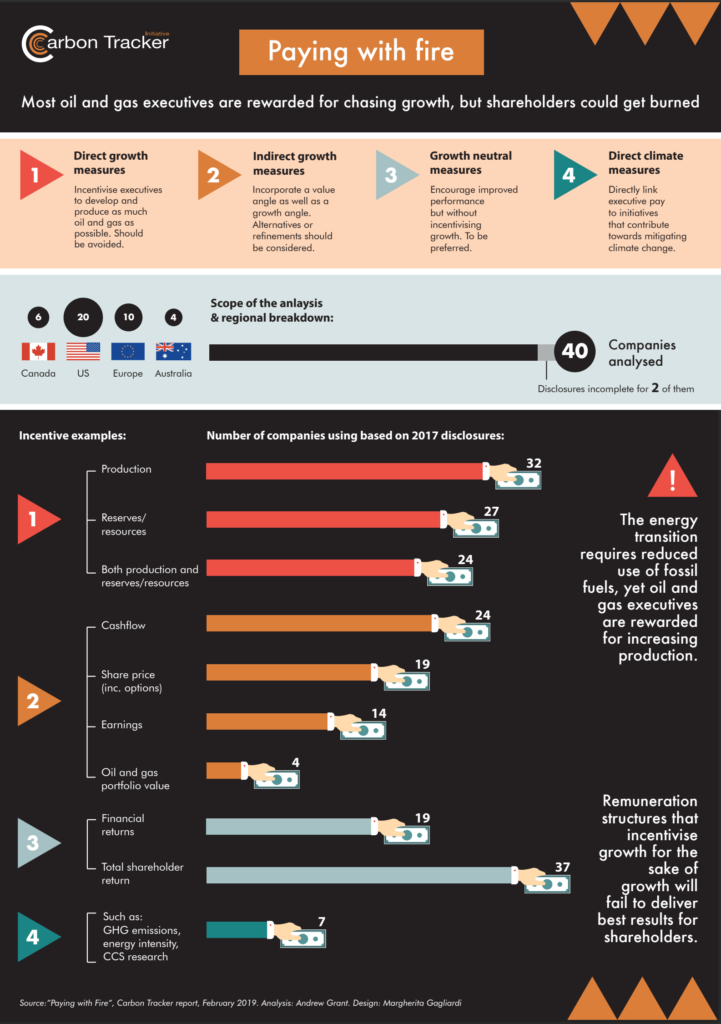Fanning the Flames: How executives continue to be rewarded to produce more oil and gas at odds with the energy transition

13 March 2020 (Carbon Tracker) – Company pay practice doesn’t yet live up to climate ambition, with the gap between stated ambition and demonstrable action widening.
The energy transition is a challenge to the traditional business model of the oil and gas industry, and companies are increasingly exposed to transition-related financial risks.
Over the past few years a number of new corporate ambitions have been announced relating to carbon emissions reductions, however, there have been only minor, incremental changes in terms of remuneration policy.
2020 will be a key year for announcements
The window for society to react to climate change is rapidly diminishing, and with remuneration policies typically applying for a number of years once set, these need to reflect the realities and dynamism of the energy transition.
We would hope to see significant updates in remuneration policies at their respective 2020 AGMs, with the exclusion of any metrics which incentivise the growth of hydrocarbon production. We encourage investors to review these policies in detail and consider how they vote in response to those policies which reward management for volume growth rather than relative value creation.

Key findings
We review the remuneration policies of 30 of the largest listed oil and gas companies and find:
- 26 out of 30 companies have direct growth metrics such as production or reserves replacement metrics in their 2019 incentive structures, at odds with the value-focused strategies needed through the energy transition.
- Globally, 15% of variable pay is driven by direct volume growth metrics, with a third of variable pay linked to growth including more subtle indirect growth incentives.
- Just four companies have no direct growth metrics: Diamondback Energy, Equinor, OMV, and Origin Energy.
- For European majors, nearly half of variable pay incentivises growth (direct and indirect metrics).
- From those who disclose 2019 policies, we see limited progress from 2018. No companies have removed all of their direct growth metrics in the period. Galp Energia have increased transparency, but disclosed the use of a production growth metric.
- 2020 is a critical period – will newly announced strategies (e.g. Repsol and BP) be backed up with consistent remuneration policies?
- Disclosure could be improved in some cases, particularly for North American companies and smaller Europeans, focusing on precision of metrics and relative weightings.

